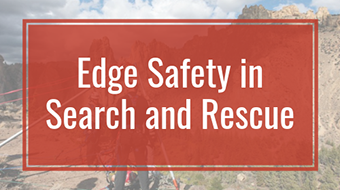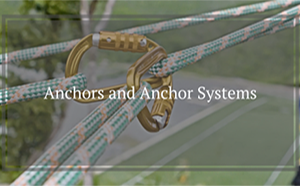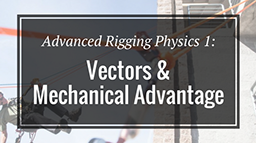This course was created simply because the first rule of vertical rescue that was taught to me years ago by an old curmudgeon was “Thou shall not plummet.” On a more serious note, we believe that the rescuer should never add to the problem and some of the practices we’re seeing specifically in the Search and Rescue world are putting people at significant risk of violating that basic rule.
Throughout this course, you’ll get an awareness view of the current problems we’re seeing with edge safety in Search and Rescue as well as possible solutions to consider. However, the real skill and fluidity in an operation comes from judgment, gained through experience, of which solution(s) to deploy.
- What’s the exposure?
- What are the skill levels of the resources?
- What gear is available?
- What will our edge challenges be?
This internal planning debate is constant and repetitive. For those with a tactical or planning background, you might liken this to the SCORPA planning model:
- Size Up: What’s our problem?
- Contingencies: What could change or go wrong? (I often phrase as “What’s going to ruin my day?”)
- Objectives: What are we trying to accomplish?
- Resources: What personnel, gear, and environment do we have to work with?
- Plan: How are we going to do this?
- Action: Do it. Manage it. Measure it. Adapt.

Applying SCOPA to Edge Safety in Search and Rescue
Size Up:
We have a clean vertical edge with 60 ft of fall exposure that will require an edge team to help vector the package because getting high help would take too much time. So, our edge attendants don’t need to go over the edge but need access up to the edge. How do we do this?
Contingencies:
What could go wrong? The litter attendant could slip off the fall line and move our edge transition to overhung spot. The patient’s injuries may dictate a more difficult horizontal litter configuration. (I nearly always default to a vertical litter with a simple pike and pivot if the patient can tolerate vertical orientation.)
Objectives:
Move the patient to the top of the cliff-face in a safe and timely manner and transfer them to EMS.
Resources:
We’ve got nine people, normal gear selection, no AHD, and zero trees within 30 feet of the edge. I can dedicate two people to the edge and we have enough gear to provide each a dedicated edge restraint line. Edge lines will need to anchor back at the trees. Can you and your team get this done successfully?
Plan:
Simple bread and butter vertical system, good edge padding and friction reduction, single movement edge transition with two man vector and attendant help. We’ll stop three feet below the edge to coordinate and re-evaluate.
Action:
Go. Now that we can see the bigger picture let’s look at our options for keeping our people safe on the edge.





